
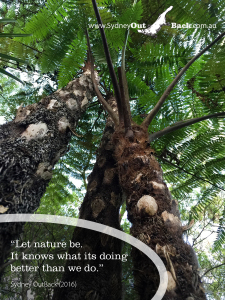 In Ku-ring-gai Chase National Park, Australia’s first National Park to be gazetted solely for conservation reasons, the Australian tree ferns and their vibrant green umbrella of fronds are an inviting, refreshing sight in the typically drier, khaki-toned Australian bush!
In Ku-ring-gai Chase National Park, Australia’s first National Park to be gazetted solely for conservation reasons, the Australian tree ferns and their vibrant green umbrella of fronds are an inviting, refreshing sight in the typically drier, khaki-toned Australian bush!
Sydney OutBack is protective of Australia’s most abundant tree fern, Dicksonia antarctica, because it is in rapid decline in the “wild”. Despite being our most abundant, most common and largest species of terrestrial tree fern, many assume it is fast growing and weed-like… just bigger. It couldn’t be more different. Specimens grow slowly at fewer than 10cm per year and numbers are threatened by harvesting of wild, established plants for landscaping, and by land clearing and deforestation. The “lucky ones”, like those protected in National Parks, may take over 100 years to reach 10 – 15m tall, the average height!
Just don’t judge it by its head-turning appearance alone!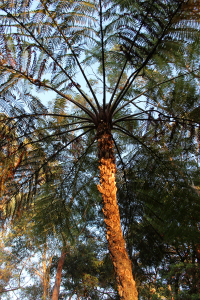
Discover 5 facts that make Dicksonia Antarctica (soft tree fern) and Cyathea australis (rough tree fern) some of the more surprising bush survival plants in NSW:
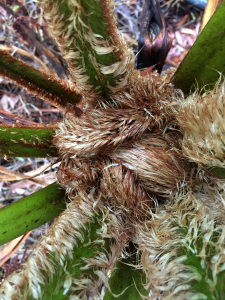 A crozier (young unfurled leaf, left) is edible, although unappetisingly described as slimy, very bitter and not improved by cooking. Never remove croziers from living plants as it kills the fern.
A crozier (young unfurled leaf, left) is edible, although unappetisingly described as slimy, very bitter and not improved by cooking. Never remove croziers from living plants as it kills the fern.
Showing the edible pith of a Dicksonia antarctica that had fallen in a storm on private property, from http://bushcraftoz.com/
The Dicksonia Antarctica is a keystone species supporting many other plants, animals and insects, so it would be logical to expect to find more bush tucker nearby; for example, although now endangered, a small burrowing crayfish could once be found in abundance under root mats of Dicksonia Antarctica in gullies in temperate, wet sclerophyll forests. Snakes and other reptiles may also provide bush tucker, as long as they don’t bite you first! What else might be discovered in the vicinity?
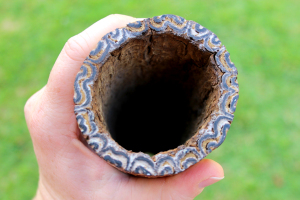
Sydney OutBack is fascinated by the ingenuity of the Aboriginal people who lived so successfully and sustainably in the seemingly inhospitable Australian bush. To learn more about Sydney OutBack’s Wilderness and Aboriginal Explorer Tour and Cruise, just click here.
Our tours are also part of Tourism Australia’s Indigenous Tourism Champions Program (ITCP), recognizing that we offer a quality experience that that meets the needs and expectations of international visitors.
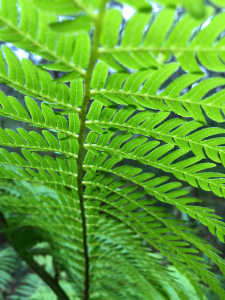 To find out more about Dicksonia Antarctica specifically, check out https://www.anbg.gov.au/gnp/interns-2003/dicksonia-antarctica.html.
To find out more about Dicksonia Antarctica specifically, check out https://www.anbg.gov.au/gnp/interns-2003/dicksonia-antarctica.html.
* Watch out for our fascinating Emu Caller blog post, coming in April.
Please remember: Plants are protected within National parks. Fruits, flowers and whole plants should be left on or with the plant to ensure species regenerate and are preserved in this protected environment.